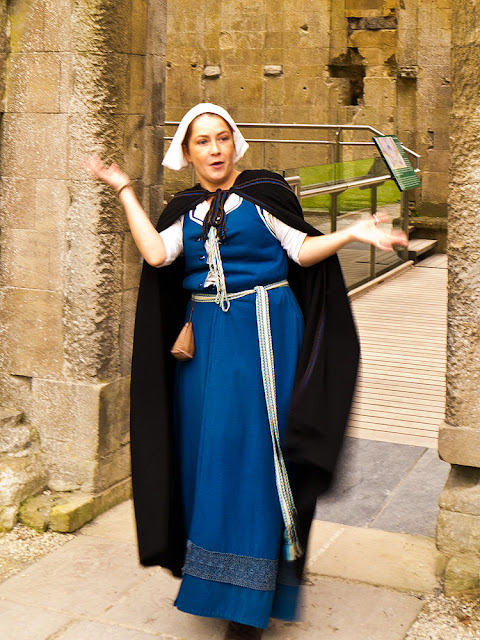The only complete building still standing within the Glastonbury Abbey complex is the
Abbot's Kitchen. This rather impressive structure, built between 1320 - 1370, was untouched during the Dissolution of Monasteries because it is built entirely of stone unlike the rest of the Abbey structures, which were lead roofed (the lead, being expensive, was stripped from the rest of the Abbey leaving the structures open to the weather).
 |
| The Abbott's Kitchen |
Glastonbury's
Abbot’s Kitchen is one of the best preserved medieval kitchens in Europe. As already stated it dates from the early 14
th century and as you can probably see, is a square structure with an octagonal stone tiled roof rising to a two-stage octagonal lantern louvre which let out the smoke from the cooking fires while drawing in clean, fresh air. The structure has unusual round buttresses on all four sides. How the kitchen connected to the Abbot's residence is uncertain, but excavations suggest via a roofed walkway.
The 80 or so
Benedictine monks who lived at the Abbey would have had a pretty spartan lifestyle, spending much of their day either in prayer or singing the praises of their Lord God. Their diet is somewhat hazy, but seems to have consisted primarily of dairy products, fruit & vegetables, fish and on high feast days some small amount of meat. Not so the Abbot.
Over the centuries the various abbots at Glastonbury have been amongst the richest men in England. As such they have looked after themselves particularly well, feasting kings, barons and dignitaries from both Britain and further afield. Did the Abbot stick to a mostly meat-free diet? Not likely! Just have a look around inside the Abbot's Kitchen:
 |
| The Roasting Frame |
The Roasting Frame (rotisserie), capable of holding a dozen fowl and a couple of carcases, hogs in the example here. An alternative rotisserie capable of holding larger carcasses (for whole beef or horse) would also have been available.
 |
| Preparation Table |
The Preparation Board may also have been used for dinning, though it is unlikely the Abbot would have eaten here. The Board would have seen a hive of activity, especially on feast days as the various dishes were prepared here. Note the Boiling Station in the background used for cooking the vegetables and boiled meats.
 |
| Boiling Station |
Most medieval kitchens had a Boiling Station with one or possibly two rise and fall hangers, but being a very rich man the Abbot of Glastonbury had four pot hangers as well as various floor standing pan stands.
With a staff of around 20,
The Kitchener would no doubt have had a lot of fun in this kitchen. He would also have enjoyed considerable power and status and been among the best of European chefs.
As well as the areas shown here the Abbot's Kitchen had a bread oven and a patisserie, where pies and delicate pastries were prepared for Abbot's delight. Pretty amazing, eh? And remember this kitchen serviced just one man most of the year. As an outsider an invite to the Abbot of Glastonbury's table must have been much sought after.


































